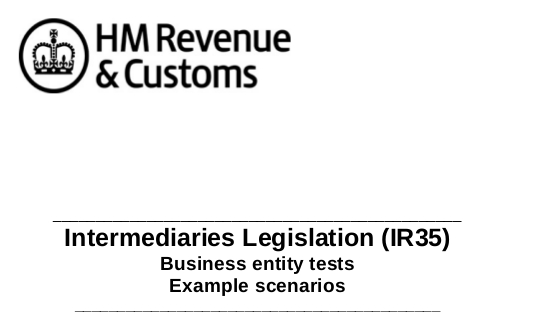What is IR35
IR35 ensures that contractors who are effectively “shadow employees” pay tax like normal employees.
There is legislation for substance over legal form of a relationship between a contractor (or freelancer or locum) and client. Some contractors use limited companies to invoice “clients”, but the overall facts suggest they are actually employees and are “inside of IR35”.
The basic questions to ask are:
– do you see yourself as an employee of the company or are you genuinely in business on your own?
– would you be subject to the same rules and control as employees?
Key factors in particular are:
- Substitution
- Right of control
- Mutuality of obligation
Take the test! http://www.hmrc.gov.uk/ir35/guidance.pdf
This doesn’t cover all the aspects, and there are a lot of factors to consider.
What if IR35 applies?
If IR35 applies, the consequences are that:
- Income in form of deemed payment under Sch E
- S.336 expenses can be claimed for travel, subsistence, PII, benefits in kind (& E’ers NI) etc
- An additional 5% of turnover can be claimed as expenses
- Deduct salaries + E’ees NI + E’ers NI paid in yr
- The income left over will be subject to income tax and national insurance at the same rates as normal employees, ie 20/40% tax and 12/2% NI
- E’ers NI also has to be paid 13.8% by contractor (client doesn’t pay)
Factors suggesting IR35
- No Substitution
- Worker cannot delegate or substitute without client’s consent
- One person companies, unless evidence to contrary
- Lack of control
- Worker engaged for period, not specific tasks
- Client can move worker to other tasks
- Client directs, supervises and quality controls work
- Mutuality of obligation
- Engager obliged to pay a wage/remuneration
- Worker obliged to provide own work or skill
- Notice period irrespective of breach could be an indicator
Potential indicators of employment:
- work on the client’s premises
- use the client’s equipment
- work standard hours
- be paid at an hourly rate or use of timesheets, no fee retention for performance
- be subject to a right of control & take direct orders
- Part and parcel of organisation
- No financial risk, client obliged to give work, worker has to accept work given
- Notice period to terminate, not at end of project
- Right to receive e’ee benefits: sick pay, holiday, staff canteen, Xmas party
Contract should reflect reality
The actual working practices are the most important factor. So if the written contract does not reflect these, it will be ignored. HMRC have been known to interview both the contractor and the client to verify the working practices.
Contract terms should be consistent, eg use company & supplier, not alternate with agency and contractor. HMRC may also have previously made a Status ruling at the client.
Need help?
MAH are well versed in the key issues surrounding IR35 and can advise contractors, freelancers and locums on how to proceed. Get in touch!
